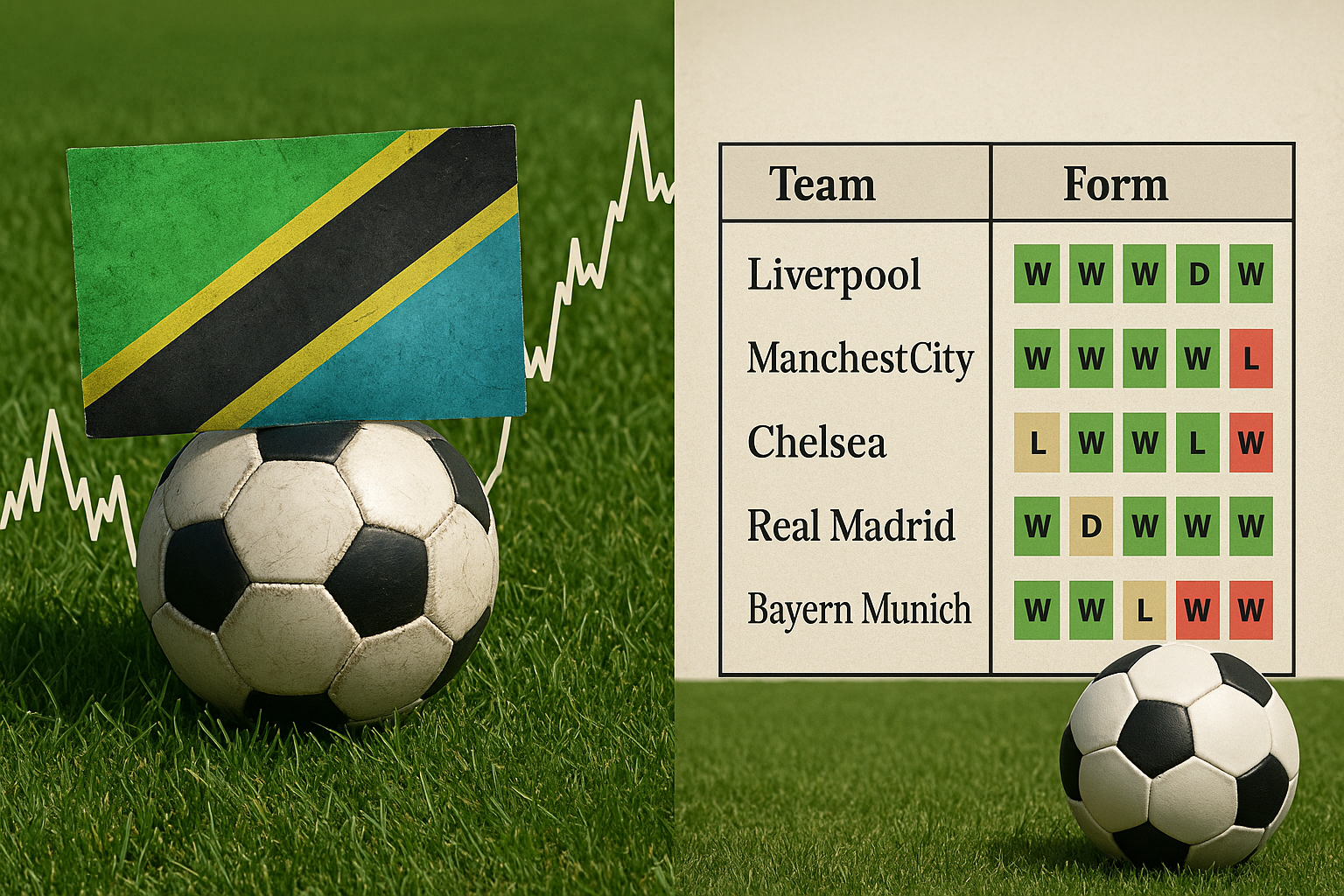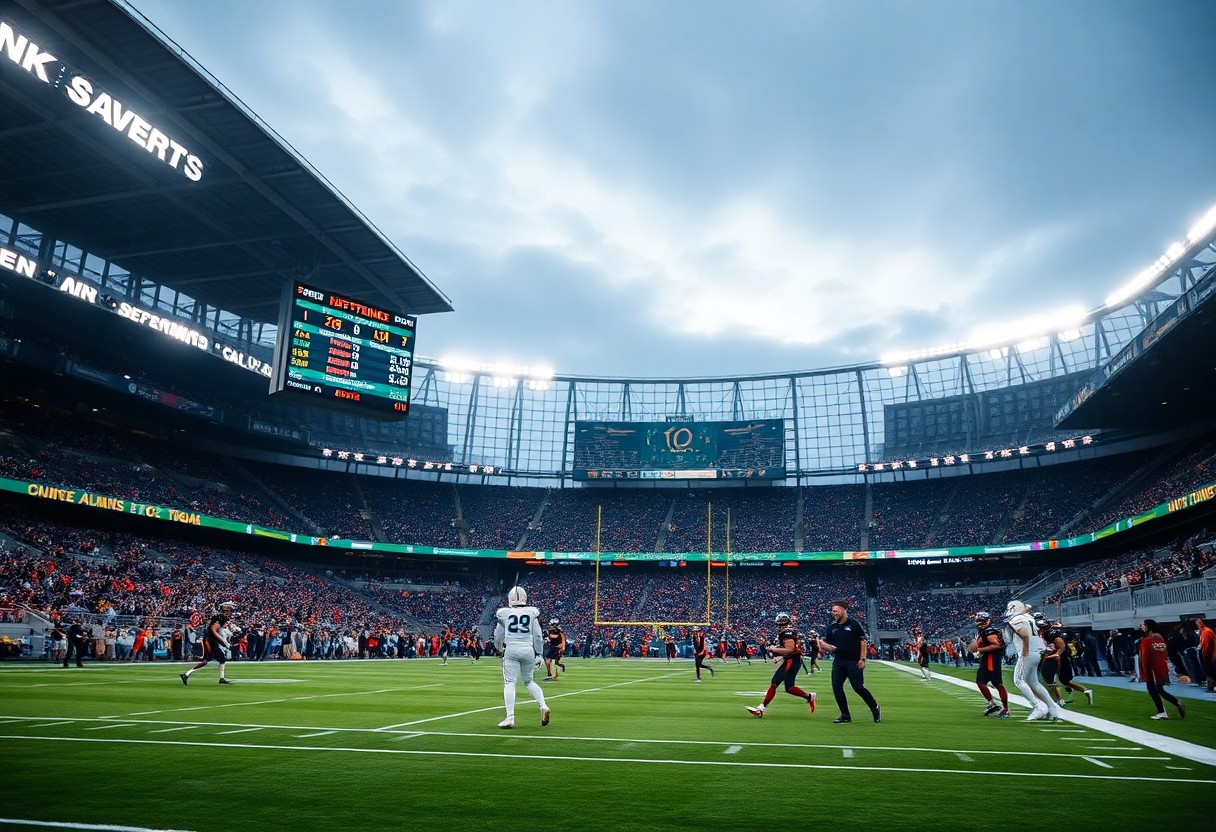Understanding Form in Tropical Football Leagues
In football betting, “form” is one of the most referenced yet misunderstood concepts. Bettors often use a team’s recent results to determine how strong or weak it currently is, assuming that past performance reliably predicts future outcomes. However, in tropical football leagues like those in East Africa, this assumption can be misleading.
Unlike European competitions, where playing conditions, scheduling, and infrastructure are relatively standardized, tropical leagues introduce a range of environmental and logistical challenges that directly impact form. Understanding these nuances is critical for anyone betting on African or international football markets.
In regions such as Tanzania, Kenya, and Uganda, form is not simply a reflection of team quality — it’s a snapshot of how a team adapts to heat, humidity, travel distance, and playing surfaces at any given moment. Matches are often played under intense sunlight and high humidity, which can sap players’ stamina and slow down the tempo of play. This leads to more cautious football, fewer goals, and a strong bias toward home results.
Altitude is another key factor. Teams from higher-altitude cities like Arusha or Nairobi are used to thinner air and cooler temperatures, giving them an edge when playing at home. Conversely, coastal teams like Young Africans (Yanga SC) and Azam FC from Dar es Salaam must adapt when they travel inland to drier and higher stadiums. These environmental swings can make form appear inconsistent — a team that dominates at home might struggle on the road simply because of climatic differences.
Pitch quality also varies significantly. Many East African clubs play on uneven or poorly maintained surfaces, which affects ball control and passing accuracy. This naturally favors physically strong, direct-playing teams over technical sides. Bettors who only analyze form through final scores may overlook the tactical and environmental context behind each result.
Moreover, tropical leagues often experience irregular scheduling, with matches postponed due to rain, local tournaments, or travel logistics. Long breaks can interrupt a team’s rhythm, while congested schedules during dry periods can cause fatigue and injuries. These disruptions make it harder to establish “momentum,” so bettors need to interpret form within these local constraints.
In short, understanding form in tropical leagues requires looking beyond statistics. A team’s last five results tell only part of the story. The more important questions are: Where were the matches played? What were the conditions? Was travel involved? Only by combining data with context can bettors build a realistic view of performance trends in tropical football.
Case Study – Tanzania’s NBC Premier League
Tanzania’s NBC Premier League (formerly known as the Vodacom Premier League) provides an excellent case study for understanding how tropical factors influence form and, consequently, betting outcomes. It is one of East Africa’s strongest leagues, featuring historic clubs like Young Africans SC (Yanga), Simba SC, and Azam FC.
The competition includes 16 teams, each playing a 30-match season (home and away format). While the structure may look similar to that of European leagues, the rhythm and results tell a different story. The league’s average goal rate is lower than that of the English Premier League or La Liga, with many matches finishing under 2.5 goals. This reflects the slower pace, tighter defenses, and the tactical emphasis on controlling possession in tough weather conditions.
Home Advantage in Tanzania
Home advantage in the NBC Premier League is exceptionally strong. According to regional betting data, home teams win roughly 50–55% of matches — a higher percentage than in most European leagues. There are several reasons for this:
- Climate adaptation: Coastal clubs perform better in heat and humidity, while inland teams dominate in cooler, high-altitude venues.
- Travel strain: Away teams often travel long distances by bus, facing fatigue and limited preparation time.
- Crowd influence: Local support in cities like Dar es Salaam can be overwhelming, creating intimidating atmospheres for visiting teams.
Because of these factors, betting purely on form without adjusting for home or away context can lead to major errors. A club might seem unbeatable after five straight wins, but if all those matches were at home, that streak may not hold once they travel to Mwanza or Mbeya.
Climate and Scheduling Challenges
Tanzania’s football calendar usually runs from August to May, overlapping with the country’s two rainy seasons (March–May and November–December). During these periods, matches are often played on wet, heavy pitches, which slows down play and reduces scoring chances. Bettors should consider betting on Under 2.5 Goals or Draw No Bet markets during rainy months when matches are more unpredictable.
Temperature and humidity also vary drastically. Coastal games in Dar es Salaam can be played at 32°C with high humidity, while inland fixtures in Mbeya or Arusha might be below 20°C. Teams that are well-conditioned for one environment may struggle in another — meaning that form can swing simply due to weather changes.
Impact of CAF Competitions
Top Tanzanian teams like Simba SC and Yanga SC also compete in CAF Champions League and CAF Confederation Cup tournaments. These additional fixtures add travel pressure and fixture congestion, which can affect league performance. Bettors should be wary when top clubs play three matches in seven days — fatigue and rotation can distort form significantly.
Player Turnover and Motivation
Another unique factor in tropical leagues is player turnover. Many East African clubs operate on short-term contracts or seasonal deals, leading to frequent roster changes. Motivation can fluctuate depending on payment schedules or external opportunities. This variability adds another layer of unpredictability to betting models that rely heavily on consistency.
Comparing Tropical League Form to Global Standards
One of the biggest mistakes bettors make is treating all football leagues as if they operate under the same physical, tactical, and psychological conditions. In reality, tropical leagues and global leagues differ in almost every measurable way — from pitch quality and weather patterns to player conditioning and match tempo. Understanding these differences is key to evaluating form correctly and avoiding false assumptions in betting.
In top European competitions such as the English Premier League, La Liga, or Bundesliga, teams play on well-maintained pitches, in controlled environments, and with access to modern sports science. This creates a relatively stable performance baseline — meaning that when a team wins five games in a row, it’s usually because of genuine superiority in form or tactics.
In contrast, tropical leagues in East Africa, including Tanzania’s NBC Premier League, Kenya’s FKF Premier League, and Uganda’s Premier League, exist in more volatile conditions. Factors like extreme heat, humidity, inconsistent travel schedules, and uneven playing fields introduce a high level of variability. This makes results more unpredictable and streaks less meaningful statistically.
For instance, a European club might play every Saturday with three to four days of recovery and training in between matches. In East Africa, scheduling can be inconsistent. A team might play on a Friday, then again on Monday due to travel constraints, followed by a two-week break because of weather disruptions. Such irregularity directly affects form, fitness, and focus.
Another important contrast lies in match tempo. European leagues typically feature faster transitions, high pressing, and well-organized defensive structures. In tropical leagues, slower ball circulation, lower passing accuracy, and frequent stoppages (due to heat or fouls) change how “dominance” is measured. A Tanzanian club leading the table may not necessarily perform better in international competitions — it simply adapts better to local match rhythms.
Statistical and Environmental Comparison
| League | Avg Goals per Match | Home Win % | Avg Temperature (Matchday) | Key Form Factor |
|---|---|---|---|---|
| English Premier League | 2.9 | 45% | 10–18°C | Tactical quality and fitness |
| La Liga (Spain) | 2.7 | 44% | 15–25°C | Possession and creativity |
| NBC Premier League (Tanzania) | 2.2 | 52% | 25–33°C | Climate and home advantage |
| FKF Premier League (Kenya) | 2.3 | 50% | 20–28°C | Altitude and travel fatigue |
This comparison highlights how environment and geography influence league outcomes. A home win percentage above 50% in tropical leagues shows how critical local adaptation is. Bettors analyzing form across regions must weigh these environmental factors just as heavily as technical skill.
Common Mistakes When Comparing Leagues
- Overvaluing short-term form:A European bettor might assume a team with three wins in a row is in excellent form. In tropical leagues, that streak may simply reflect favorable home conditions or weak opposition.
- Ignoring rest and recovery:East African teams often lack rotation depth and advanced fitness programs. One intense travel week can derail an otherwise strong side.
- Using global stats without adjustment:Metrics like “expected goals (xG)” or possession rates are useful in Europe but less reliable in leagues with poor pitch conditions or unpredictable tempo.
- Assuming similar motivation:Players in tropical leagues may face inconsistent pay, long journeys, or non-football commitments that affect performance intensity.
In essence, comparing form across leagues requires contextual calibration — an understanding of what “good form” truly means in each environment. Only then can bettors translate local results into global expectations when analyzing international tournaments or inter-league matchups (e.g., CAF vs. UEFA clubs).
Using Form Analysis for Smarter Betting Decisions
Now that we’ve identified how tropical and global leagues differ, the next step is to turn that knowledge into practical betting strategy. Reading form effectively requires both data literacy and an appreciation for qualitative factors that numbers alone can’t capture.
1. Apply Local Weighting to Form
When betting on tropical leagues, give more importance to home form and environmental adaptability than to overall win streaks. A team’s home record is often a stronger predictor of future success than their last five results combined. For example, if Yanga SC has a 90% home win rate but struggles away, their “form” should be evaluated separately for each condition.
2. Account for Travel and Fatigue
Always check fixture lists and distances between matches. Long travel by road across Tanzania, Kenya, or Uganda can significantly impact player performance. Bettors who monitor logistics can anticipate dips in form before the market adjusts.
3. Adjust for Weather Patterns
Seasonal variations dramatically affect match outcomes. During rainy months (March–May, November–December), goals per match drop across East African leagues. Bettors should favor Under 2.5 Goals and Draw outcomes during these stretches, especially when poor pitch drainage limits attacking play.
4. Evaluate Motivation and Psychology
Motivation plays a bigger role in tropical leagues than many realize. Some teams perform differently based on bonuses, rivalries, or crowd pressure. Before betting, consider the context: Is the match part of a derby? Is the team fighting relegation? Are players fatigued from CAF travel? These psychological elements often explain sudden shifts in form that numbers can’t.
5. Cross-League Analysis for International Betting
When teams from tropical leagues play in CAF Champions League or Confederation Cup matches, bettors often overestimate their domestic form. For example, a Tanzanian side dominating locally may struggle against North African or South African clubs that train under cooler climates and enjoy better facilities. Adjust expectations by factoring in fitness standards and tactical exposure of the opposition.
6. Use Hybrid Analysis (Stats + Local Insight)
Pure data models fail when stats are incomplete or inconsistent. Combine statistical tracking (like goals scored and home win rates) with local insights — news reports, fan pages, or interviews with coaches. These sources often reveal injuries, unpaid wages, or travel problems before they show up in betting odds.
7. Bet Responsibly and Track Patterns
Because tropical leagues are less predictable, adopt a cautious staking plan. Track your bets by league, weather condition, and home/away split to identify profitable niches over time. You’ll quickly notice that form trends follow cycles tied to seasonality and geography.
Where to Find Reliable Information for East African Football Betting
One of the biggest challenges in tropical league betting is access to accurate and timely information. While global leagues like the English Premier League have dozens of analytics sites and live data feeds, East African competitions are less documented. However, with the right mix of local and official sources, bettors can still gather valuable insights to interpret form effectively.
1. Official League Websites
Each country’s football federation maintains a league portal that includes fixtures, results, and disciplinary updates. For Tanzania, the official source is the Tanzania Football Federation (TFF), which provides weekly match schedules and verified statistics. Similarly, Kenya’s Football Kenya Federation (FKF) and Uganda’s FUFA sites are reliable for tracking player suspensions and lineup information.
2. Local Media and Sports Portals
Tanzanian outlets like Mwanaspoti, Daily News Tanzania, and Global Publishers frequently publish team news, injury updates, and post-match analysis. Following local journalists on Twitter (X) or Facebook fan pages can also give bettors a real-time edge before bookmakers adjust the odds.
3. Data and Odds Comparison Sites
Websites such as FlashScore, Soccerway, and OddsPortal cover East African leagues with varying depth. While data may not be as complete as for European football, these platforms provide essential tools for tracking historical form, goal averages, and home-away records.
4. Community Groups and Betting Forums
Online communities — especially Telegram and WhatsApp betting groups — often share insider tips or leaked lineup information. While not always verified, they can help bettors sense market sentiment. Always cross-check these tips with official sources to avoid misinformation.
By combining official statistics, local reporting, and on-the-ground insights, bettors can build a more accurate picture of form and momentum in tropical leagues. This hybrid approach ensures that your analysis captures not just numbers, but also the human and environmental variables that define football in East Africa.
Conclusion: Turning Local Knowledge into Global Betting Insight
Betting success in tropical leagues like Tanzania’s NBC Premier League comes down to one principle — context beats numbers. While statistics and streaks provide structure, understanding why results occur gives bettors the true edge.
Form in tropical leagues is not linear; it’s dynamic, shaped by weather, travel, and psychology. A team’s five-match unbeaten run in Tanzania may not mean the same as a similar streak in England, Spain, or Germany. The difference lies in how teams adapt to their environments and resources.
For bettors, the lesson is clear: don’t copy-paste global betting models into local markets. Instead, learn the rhythms of East African football, monitor conditions week by week, and stay connected to local news. Those who can interpret form within the context of geography and motivation will consistently find value where others see randomness.
Ultimately, tropical football betting rewards curiosity and research more than any algorithm. By blending local knowledge with global betting discipline, you transform uncertainty into opportunity — one smart wager at a time.
FAQ: Tropical League Form and Betting
1. Why is reading form in tropical leagues harder than in European leagues?Because of variable conditions such as heat, humidity, and travel fatigue. These factors make performance less consistent and harder to predict through statistics alone.
2. Why do teams perform so differently at home compared to away?Home advantage is amplified in East Africa due to crowd influence, pitch familiarity, and environmental comfort. Away teams often struggle with travel and climate changes.
3. Can tropical league form predict CAF competition results?Partially. Domestic dominance helps, but CAF matches introduce new challenges — cooler climates, higher tactical levels, and better facilities from North African opponents.
4. How should bettors adjust for weather and pitch conditions?During rainy or hot months, expect fewer goals and lower tempo. Betting on Under 2.5 Goals or Draw outcomes tends to be safer.
5. Is it reliable to use European betting models for East African leagues?Not entirely. European models rely on consistent data and infrastructure, while East African leagues require contextual adjustments for environment, scheduling, and motivation.




